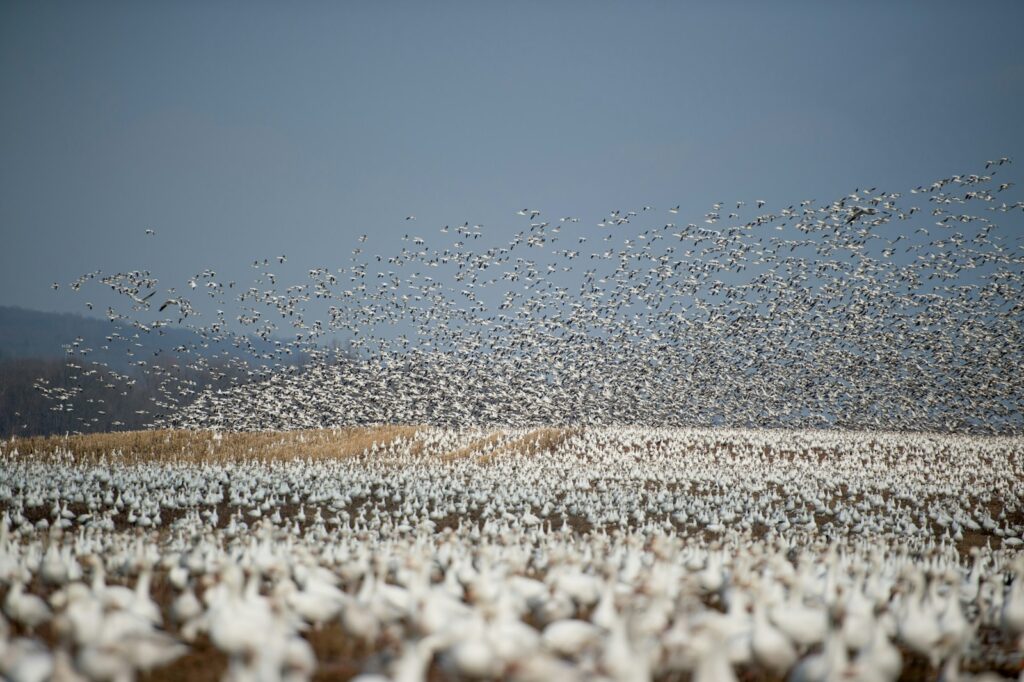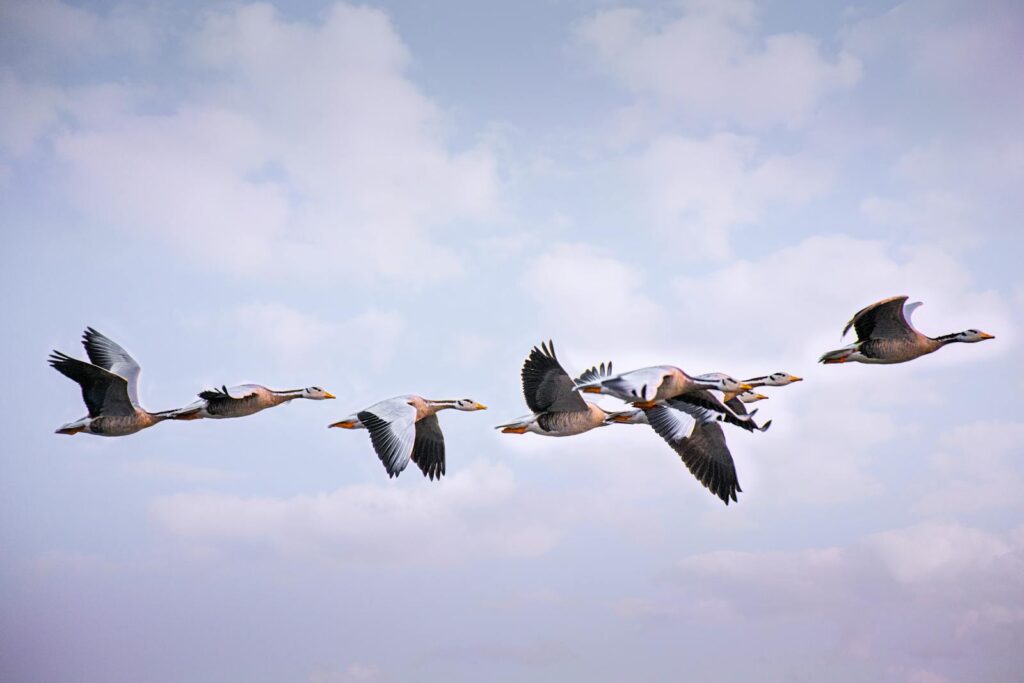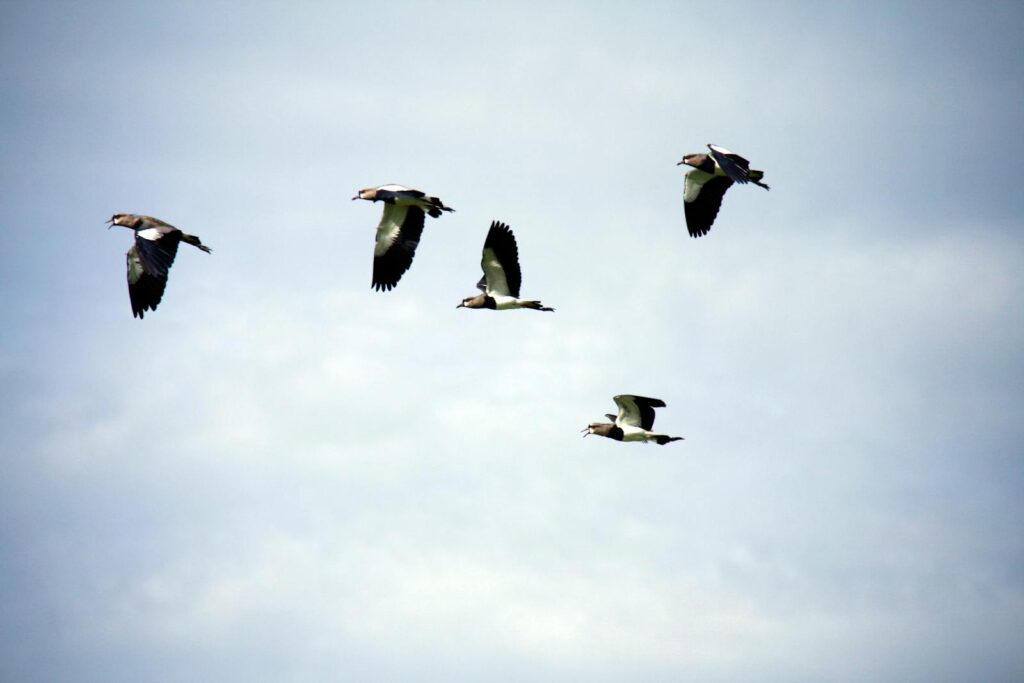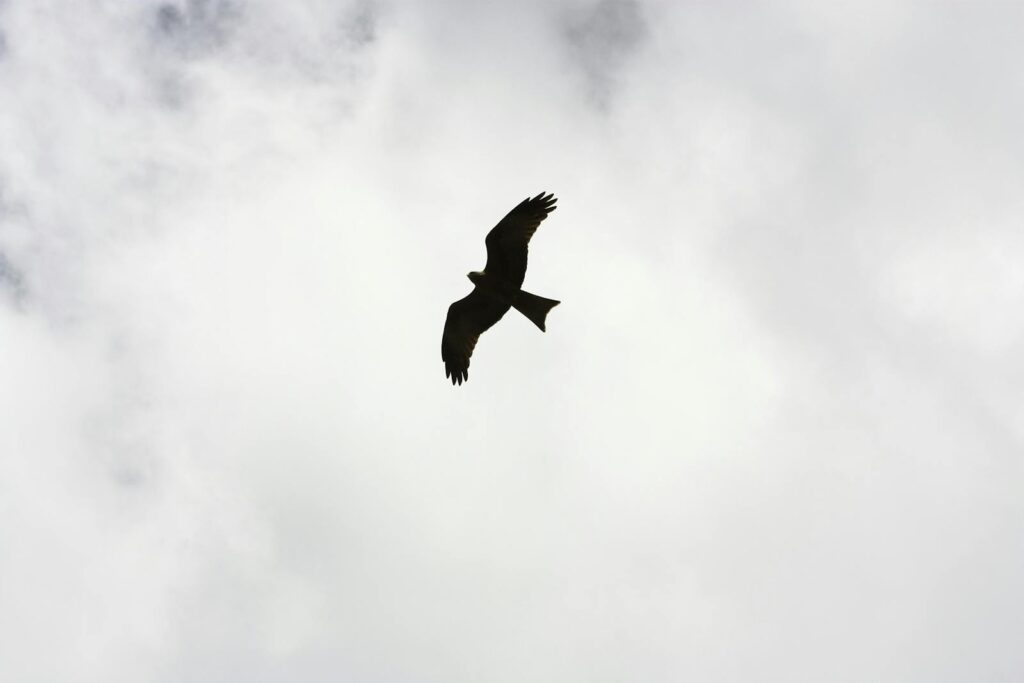When we gaze up at the sky during migration seasons, we often spot birds flying overhead, but what we see represents just a fraction of their remarkable aerial journey. Birds are capable of achieving extraordinary altitudes during migration, far beyond what the human eye can detect. These feathered travelers navigate through various atmospheric layers, facing changing conditions as they climb to heights that would leave humans gasping for oxygen. Understanding the impressive elevations birds reach during migration not only illuminates their incredible physical capabilities but also highlights the evolutionary adaptations that make such journeys possible. Let’s explore the fascinating world of high-altitude bird migration and discover just how far above our heads these remarkable creatures travel.
The Range of Migration Altitudes

Birds display remarkable diversity in their preferred migration altitudes, with species flying anywhere from just above ground level to stratospheric heights. Most songbirds typically migrate at elevations between 500 to 2,000 feet above ground level, keeping landmarks visible for navigation while avoiding ground-based predators. Waterfowl and raptors often cruise at moderate altitudes of 2,000 to 5,000 feet, balancing energy efficiency with favorable wind conditions. At the extreme end of the spectrum, some specialized high-flyers like bar-headed geese and certain shorebirds regularly ascend to altitudes exceeding 20,000 feet during their migratory journeys. This range of migration heights reflects different evolutionary strategies, with each species finding its optimal cruising altitude based on its unique physiology and migration challenges.
Record-Breaking High Flyers

The absolute champions of high-altitude migration continue to astound researchers with their extraordinary capabilities. The bar-headed goose holds the most celebrated record, routinely flying over the Himalayan mountain range at elevations of 27,000 to 29,000 feet—heights where oxygen levels are just one-third of those at sea level. Rüppell’s griffon vulture claims the title for the highest recorded bird flight, with one unfortunate individual confirmed at 37,000 feet after colliding with an aircraft over West Africa. Common swift birds have been documented spending almost their entire lives airborne, sometimes reaching altitudes of 10,000 feet even when not migrating. Alpine choughs have been spotted circling near the summit of Mount Everest at approximately 26,500 feet, demonstrating that some species can function in the most inhospitable high-altitude environments on Earth.
Physiological Adaptations for High-Altitude Flight

Birds that routinely fly at extreme altitudes possess remarkable physiological adaptations that enable their high-flying capabilities. Their respiratory systems are fundamentally more efficient than mammals’, featuring air sacs that allow for continuous one-way airflow through the lungs, maximizing oxygen extraction even in thin air. High-altitude specialists like the bar-headed goose have evolved hemoglobin with a higher oxygen affinity, allowing their blood to capture oxygen more efficiently where it’s scarce. Their heart and flight muscles contain higher densities of capillaries and mitochondria than low-altitude birds, ensuring adequate oxygen delivery and energy production in challenging conditions. Additionally, these birds typically have larger lungs relative to their body size and can maintain higher breathing rates during flight, compensating for the reduced oxygen content at high elevations.
The Challenges of High-Altitude Migration

Birds flying at extreme heights face a multitude of challenges that make their achievements even more remarkable. The most obvious obstacle is the severely reduced oxygen availability, which decreases by approximately 30% with each 10,000-foot increase in altitude, forcing birds to adapt both physiologically and behaviorally. Temperatures plummet dramatically at high altitudes, often dropping below freezing, requiring birds to generate substantial heat while simultaneously performing the energy-intensive task of flying. Wind patterns become more powerful and unpredictable in the upper atmosphere, presenting both opportunities for assistance and threats of disorientation or exhaustion. Additionally, high-altitude migrants must contend with reduced air density, which affects wing aerodynamics and requires adjustments to flight techniques to maintain lift and control.
Why Fly So High? The Advantages of Altitude

Despite the challenges, birds have compelling reasons to undertake high-altitude migrations. Perhaps most significantly, higher altitudes often feature beneficial tailwinds that can substantially increase ground speed while reducing energy expenditure, essentially providing a free boost across vast distances. The thinner air at high elevations, while containing less oxygen, also creates less drag, potentially improving flight efficiency once birds acclimate to the reduced oxygen levels. Flying high allows birds to avoid many ground-based predators and obstacles that would otherwise pose threats during their long journeys. Additionally, higher altitudes typically have more stable weather patterns with fewer thunderstorms and precipitation events that could force emergency landings or create dangerous flying conditions, making the upper airspace a more reliable migration corridor despite its other challenges.
Altitude Variation During Migration Journeys

Birds rarely maintain a constant altitude throughout their entire migration, instead adjusting their flight height strategically to optimize their journey. Many species fly higher during the day when thermal updrafts are available and drop to lower altitudes at night when conditions stabilize. Weather systems directly influence altitude decisions, with birds often climbing to avoid precipitation or descending to escape strong headwinds. Research has shown that some birds adjust their altitude frequently during a single flight, ascending or descending hundreds or even thousands of feet to find the most favorable wind conditions. These altitude shifts are particularly evident when birds approach geographical barriers like mountain ranges, where they must choose between climbing to clear the peaks or detouring around them based on energy considerations and prevailing conditions.
How Altitude Affects Energy Consumption

The relationship between flight altitude and energy expenditure represents a crucial calculation for migrating birds. Flying at higher altitudes generally requires more initial energy to reach those elevations, creating an “energy investment” that must be offset by subsequent benefits. Once at cruising altitude, birds can potentially save energy due to reduced air density and drag, though these benefits are balanced against the increased respiratory effort needed in oxygen-poor environments. Favorable winds at specific altitudes can dramatically reduce energy costs, with tailwinds potentially cutting energy requirements by 30% or more compared to still-air conditions. Birds have evolved remarkable sensitivity to these energy economics, with studies showing they can detect and exploit even slight wind advantages by shifting altitude, demonstrating how precisely they optimize their vertical position to maximize migration efficiency.
The Role of Technology in Tracking Flight Altitudes

Our understanding of high-altitude bird migration has been revolutionized by advances in tracking technology over recent decades. Traditional methods like visual observation and bird banding provided limited altitude information, but modern GPS transmitters small enough to be carried by birds now deliver precise three-dimensional location data, including exact altitudes throughout migration journeys. Weather surveillance radars have proven invaluable for detecting large-scale migration movements, capturing altitude distributions across entire regional bird populations during peak migration periods. Pressure-sensitive altimeters incorporated into miniaturized tracking devices have enabled researchers to record altitude changes with previously impossible precision, revealing the dynamic nature of flight height adjustments. These technological advances continue to unveil new discoveries about high-altitude migration strategies, with each generation of tracking devices becoming smaller, more precise, and capable of monitoring additional parameters like wing-beat frequency at different altitudes.
Comparing Bird Altitudes to Human Flight

The altitudes reached by migrating birds offer fascinating comparisons to human aviation capabilities and limitations. Commercial passenger aircraft typically cruise between 30,000 and 42,000 feet, altitudes that overlap with the highest recorded bird flights, although aircraft operate with pressurized cabins and supplemental oxygen that birds obviously lack. Mountain climbers typically require supplemental oxygen above 26,000 feet (the “death zone”), yet bar-headed geese routinely fly at these elevations using only their evolved respiratory capabilities. The highest skydiving jumps have occurred from approximately 135,000 feet, far beyond any confirmed bird altitude, representing an absolute limit that even birds cannot approach due to the near-vacuum conditions. What makes bird achievements particularly remarkable is that they maintain these extreme altitudes while simultaneously performing the physically demanding activity of powered flight, without any external assistance or technical equipment.
Climate Change and Migration Altitudes

Emerging research suggests that climate change is beginning to influence the altitudes at which birds migrate, with potentially significant consequences. Rising global temperatures are altering atmospheric circulation patterns, potentially shifting the location and strength of jet streams that many high-flying migrants rely upon for efficient travel. Some studies indicate birds may be flying higher in certain regions to locate suitable winds that have shifted upward due to changing climate dynamics. Warming temperatures also affect how air density and oxygen availability vary with altitude, potentially requiring birds to adjust their traditional flight height preferences to maintain optimal flying conditions. These altitude shifts represent yet another way in which migratory birds must adapt to rapidly changing environmental conditions, adding to the numerous challenges these long-distance travelers already face from habitat loss and other human-caused disruptions.
Nocturnal High-Altitude Migration

Many bird species conduct their highest-altitude flights under the cover of darkness, with nocturnal migration representing a distinct strategy with its own altitude patterns. Radar studies have revealed that night migrants often fly significantly higher than their daytime counterparts, with many songbirds cruising between 5,000 and 9,000 feet after sunset—heights that offer cooler, more stable atmospheric conditions. The cover of darkness provides protection from visual predators, allowing smaller birds to safely reach altitudes that might be too risky during daylight hours. Nocturnal conditions also typically feature less atmospheric turbulence and fewer thermal currents, creating a more predictable flying environment that may facilitate navigation at extreme heights. Scientists studying these night flights have documented remarkable concentration of migrants within narrow altitude bands that suggest birds can detect and exploit optimal flying conditions even in complete darkness.
Future Research on Bird Flight Altitudes

Despite significant advances in our understanding of high-altitude bird migration, numerous questions remain that will drive future research in this fascinating field. Scientists are particularly interested in developing even smaller, lighter tracking devices that can monitor altitude without affecting the natural flight behavior of smaller migratory species, potentially revealing previously unknown high-altitude specialists. Researchers hope to better understand the decision-making processes birds use when selecting flight altitudes, including how they detect distant wind conditions and weigh the tradeoffs between altitude-related costs and benefits. Interdisciplinary research combining atmospheric science with ornithology promises new insights into how birds might exploit complex weather systems during migration. Additionally, physiologists continue investigating the cellular and molecular adaptations that enable high-altitude flight, research that may ultimately have applications in human medicine for treating altitude sickness and other oxygen-related conditions.
Conservation Implications of High-Altitude Migration

Understanding the altitudes at which birds migrate carries important conservation implications that influence how we protect these aerial travelers. High-altitude migration corridors represent crucial but invisible habitat that may need specific protection, particularly as airspace becomes increasingly crowded with aircraft, wind turbines, and other human infrastructure. Knowledge of migration altitudes helps aviation authorities establish flight restrictions during peak migration periods, reducing bird-aircraft collisions that threaten both wildlife and human safety. Conservation strategies increasingly recognize that protecting ground-based habitats alone is insufficient if the airspace connecting these areas remains hazardous or degraded. As climate change alters atmospheric conditions, conservationists must consider how shifts in optimal migration altitudes might affect birds’ ability to complete their journeys successfully, potentially requiring new approaches to migratory bird protection that account for their three-dimensional habitat requirements.
The extraordinary heights achieved by migrating birds represent one of nature’s most impressive adaptations. From the bar-headed goose flying over the Himalayas to the countless songbirds traveling under cover of darkness at surprising elevations, these aerial journeys showcase the remarkable evolution of flight capabilities. As our technology advances, we continue to uncover new details about the strategies birds employ to navigate the challenges of high-altitude migration. These discoveries not only deepen our appreciation for these remarkable creatures but also highlight the importance of considering the entire vertical space these birds require for successful migration. By understanding and protecting their aerial highways, we help ensure that future generations will continue to witness the awe-inspiring spectacle of birds traversing continents at heights that challenge human imagination.
